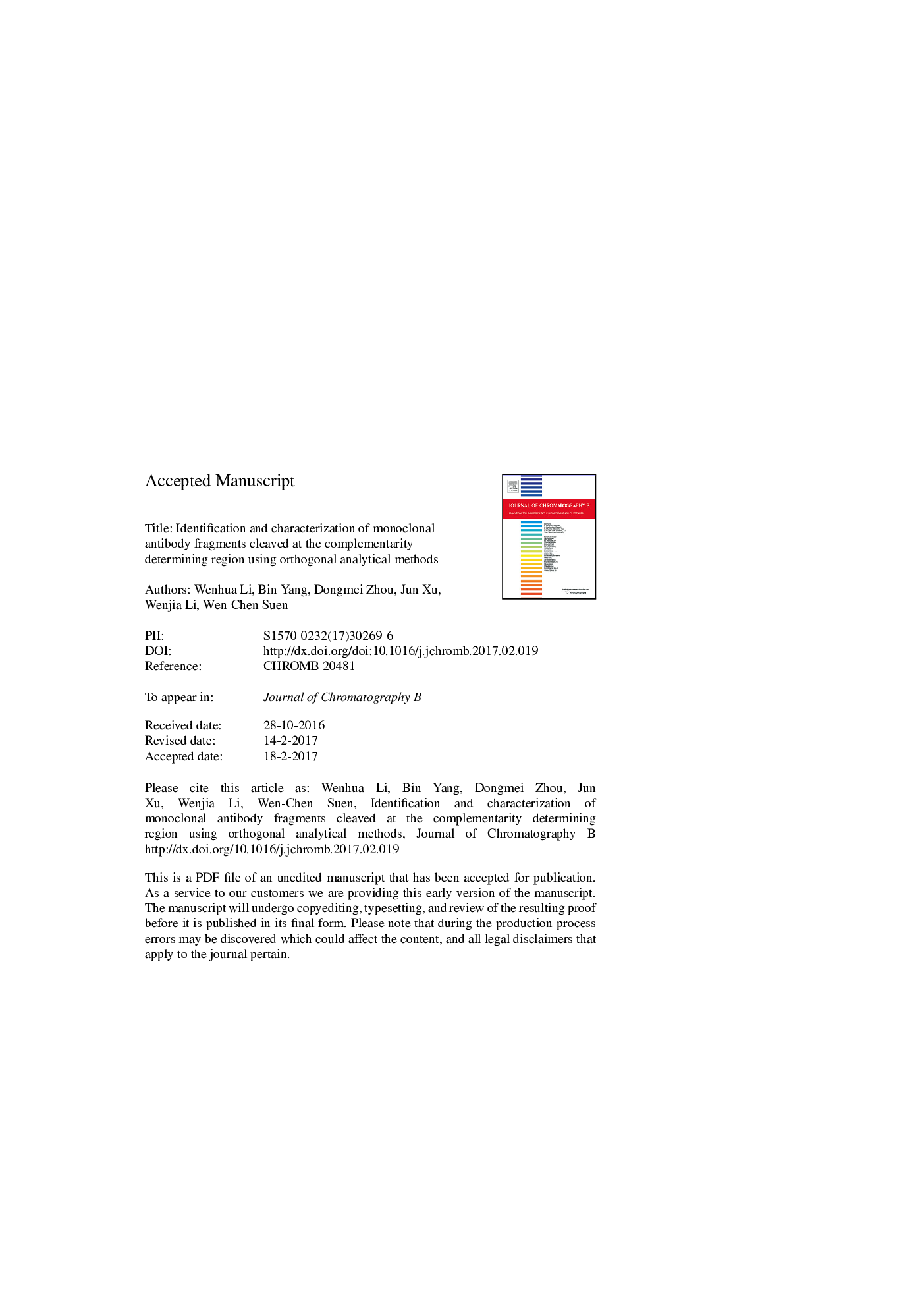| Article ID | Journal | Published Year | Pages | File Type |
|---|---|---|---|---|
| 5136494 | Journal of Chromatography B | 2017 | 29 Pages |
Abstract
Sodium dodecyl sulfate capillary electrophoresis (CE-SDS) has been widely used to separate and quantify monoclonal antibody (mAb) fragments and impurities. Two fragments with different masses smaller than monomer were observed in the CE-SDS analysis of a recombinant IgG1 mAb treated at 40 °C for 28 days. Reversed phase liquid chromatography mass spectrometry (RP-LC-MS) and trypsin digestion peptide mapping followed by LC-MS/MS analysis were employed to conclusively demonstrate that these antibody fragments were the degradation products derived from a Ser-Ser peptide bond cleavage at the heavy chain complementarity determining region (CDR). The total percentage of the cleaved antibody heavy chain was increased from 1.1% in the control sample to 4.6% in the forced degradation sample stored at 40 °C for 28 days by using CE-SDS analysis. Native size exclusion liquid chromatography (SEC-HPLC) was used to analyze the fragment profile of this treated mAb but did not reveal fragments smaller than the monomer. However, a small fragment was detected using denaturing size exclusion liquid chromatography (dSEC-HPLC) and was confirmed to be the N-terminal fragment of the heavy chain cleaved at the CDR region using RP-LC-MS analysis. These results suggested that this N-terminal fragment may be closely associated with the rest of the cleaved antibody molecule through non-covalent bond interactions. Moreover, when dSEC-HPLC and RP-LC-MS were used to analyze the aggregate and monomer samples individually collected from SEC-HPLC, both samples contained the same amount of the cleaved N-terminal fragment. These results suggested that the CDR region cleaved fragments likely not be involved in aggregates formation of this antibody. This case study reiterated that a combination of orthogonal analytical methods plays a crucial role in comprehensively analyzing and characterizing antibody fragmentation.
Keywords
TFASEC-HPLCEICsLMWDTTCQACDRmAbCIDm/zMonoclonal antibodyCollision-induced dissociationTrifluoroacetic acidFormic acidCapillary electrophoresisChoChinese Hamster OvaryFragmentationTicsdithiothreitollight chainheavy chainLiquid chromatography mass spectrometryIAMcomplementarity determining regionmass to charge ratiolow molecular weightCritical quality attributeSize exclusion chromatographyextracted ion chromatogramstotal ion chromatogramsiodoacetamide
Related Topics
Physical Sciences and Engineering
Chemistry
Analytical Chemistry
Authors
Wenhua Li, Bin Yang, Dongmei Zhou, Jun Xu, Wenjia Li, Wen-Chen Suen,
